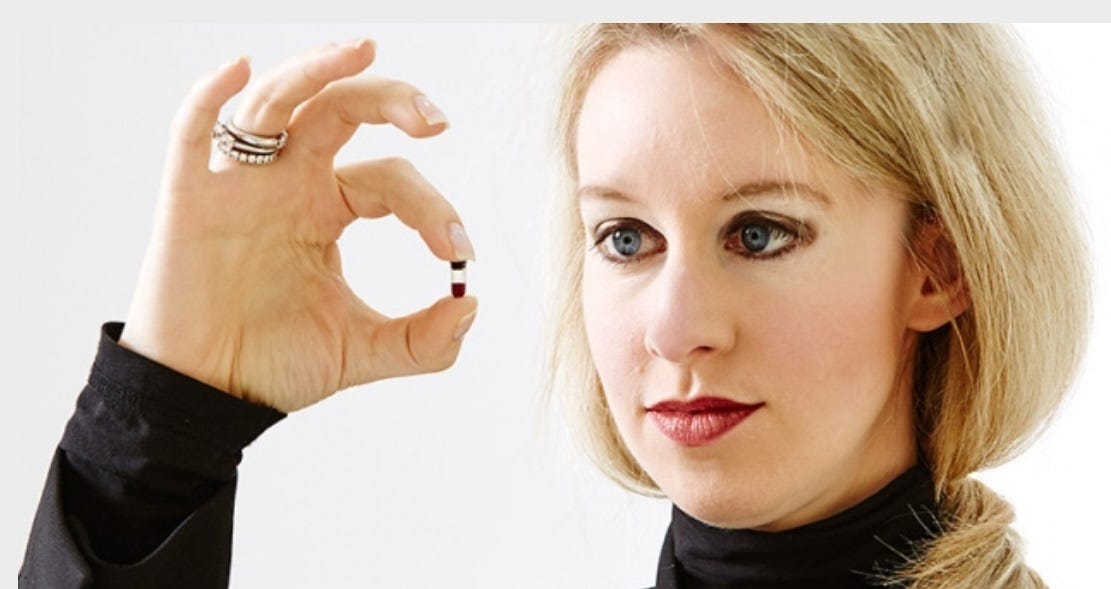Theranos was Fraudulent, What About Its Patents?
In Launching the Innovation Renaissance I argued that patents should be given for specific inventions rather than just for broad “ideas”:
Thomas Edison invented and patented numerous products: the light bulb, the phonograph, movie film and much else besides. (At one point the patent office required that patents be accompanied by working models.) The invention of products typically requires the expenditure of sunk costs in a way that the creation of ideas does not. Today it is not necessary to implement an idea to patent it, and many patentable ideas are so broadly phrased that they could not be implemented in a model.
Edison famously said that “genius is one percent inspiration, ninety-nine percent perspiration.” A patent system should reward the 99 percent perspiration, not the 1 percent inspiration. In inventing the light bulb, for example, Edison laboriously experimented with some 6,000 possible materials for the filament before hitting upon bamboo. If Edison were to patent the light bulb today, he would not need to go to such lengths. Instead, Edison could patent the use of an “electrical resistor for the production of electro-magnetic radiation,” a patent that would have covered oven elements as well as light bulbs.
, who holds the Mark Cuban Chair to Eliminate Stupid Patents at the Electronic Frontier Foundation, points out in an excellent article that giving patents for vaguely stated ideas was exactly the problem with Theranos and its so-called patents.
Holmes found a more receptive audience at the USPTO. She says she spent five straight days at her computer drafting a patent application. The provisional application, filed in September 2003 when Holmes was just 19 years old, describes “medical devices and methods capable of real-time detection of biological activity and the controlled and localized release of appropriate therapeutic agents.” This provisional application would mature into many issued patents. In fact, there are patent applications still being prosecuted that claim priority back to Holmes’ 2003 submission.
But Holmes’ 2003 application was not a “real” invention in any meaningful sense. We know that Theranos spent years and hundreds of millions of dollars trying to develop working diagnostic devices. The tabletop machines Theranos focused on were much less ambitious than Holmes’ original vision of a patch. Indeed, it’s fair to say that Holmes’ first patent application was little more than aspirational science fiction written by an eager undergraduate.
…Two legal doctrines are relevant here. The “utility” requirement of patent law requires that the invention work. And the “enablement” requirement means that the application has to describe the invention with enough detail to allow a person in the relevant field to build and use it. If the applicant herself can’t build the invention with nearly unlimited time and money, it does not seem like the enablement requirement could possibly be satisfied.
The USPTO generally does a terrible job of ensuring that applications meet the utility and enablement standards.
Despite never having built a working product, Theranos accumulated hundreds of patents. These patents are now the only thing of value left but the patents aren’t valuable because of breakthrough science, the patents are valuable because they can be used to force people who do breakthrough science to cough up part of their return.
As Nazer puts it:
Accused of having lied to investors and endangered patients, the company leaves us with a parting gift: a portfolio of landmines for any company that actually solves the problems Theranos failed to solve.
 Daniel Nazer
Daniel Nazer